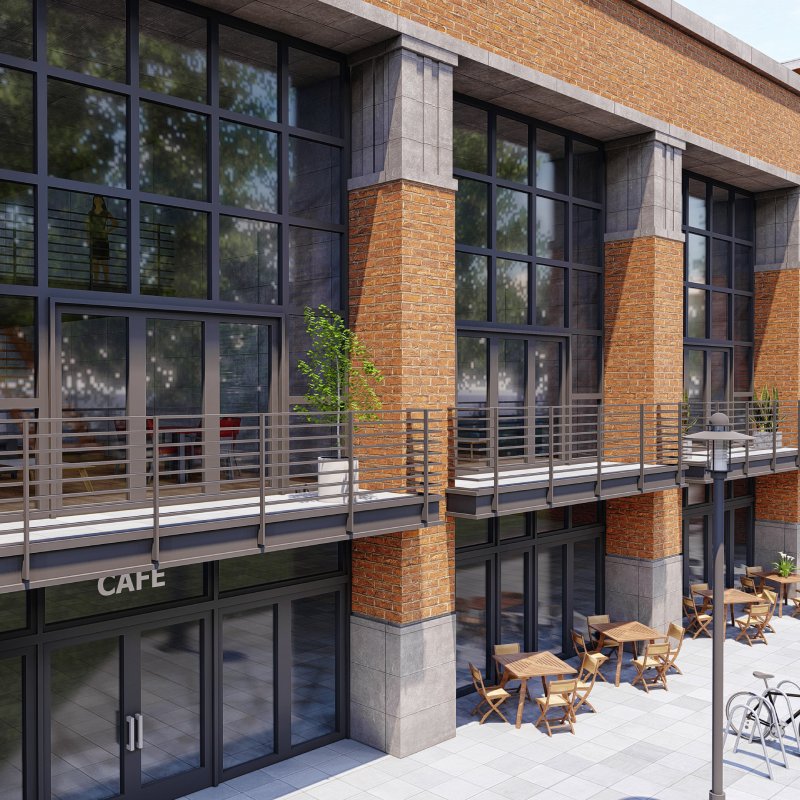Discovering that the property you want to buy includes a flying freehold can put many people off. Although it’s true that securing a mortgage for this type of property can be more complex than for a regular property, with the right guidance, it’s certainly doable. And, if you know where to look, you can easily obtain mortgage approval from a willing lender.
If you’re comfortable doing your due diligence and seeking guidance from a competent conveyancing solicitor and mortgage broker, then buying a freehold property can be an excellent decision. However, before you dive in, it’s essential to understand how flying freeholds work and the potential pitfalls that come with them.
In this guide we cover everything you need to know, including how to obtain financing, the pros and cons of a flying freehold mortgage, and answer the critical question: can you get a mortgage on a flying freehold?
We hope you find this guide helpful, and we’re confident that once you’ve read it, you’ll be ready to make an informed decision when it comes to buying a flying freehold property.
What does freehold mean?
A freehold is a form of property ownership in the UK, granting you complete control over the land and any buildings that sit upon it for an indefinite period. As a freeholder, you hold the highest level of ownership, which means you have the full authority to decide how the property is used and maintained.
Unlike leasehold, where you essentially rent the property for a fixed term, freehold gives you the privilege of absolute ownership with no time restrictions.
While owning a freehold property comes with its advantages, it also carries certain responsibilities. As a freeholder, you are solely responsible for the upkeep and maintenance of the building and the land it occupies. Additionally, you will need to ensure that any legal obligations, such as planning permissions, are met.
Despite these responsibilities, many people prefer to purchase a freehold property, as it offers greater control, long-term security, and freedom from ground rent or service charges often associated with leasehold properties.

What is a flying freehold?
The term ‘flying freehold‘ might sound like something out of a fantasy novel, but in reality, it’s a very real concept in property law, and one that can cause some interesting challenges.
A flying freehold refers to a freehold property where a part of it extends over or under another freehold property. This can often be seen in properties where, for instance, a room or balcony might overhang a neighbouring property, or where the basement extends beneath it.
This sort of arrangement can lead to complications, particularly around the issues of maintenance and repair of the ‘flying’ portion.
As the owner of a flying freehold, you’d have rights to the part of your property that extends over or under another, but you’d also have a reliance on your neighbour to maintain their property to the standard necessary to support yours. Equally, you’d need to ensure your property doesn’t negatively impact theirs.
Imagine you have a balcony that extends over a neighbouring property’s garden or outdoor space. This portion of your property, the balcony, is the flying freehold.
Suppose a townhouse has an upper-level extension, such as a room or loft, that projects over a passageway or driveway owned by a separate freeholder. This extension would be a flying freehold.
If part of your cellar or basement extends beneath a neighbouring property, this is considered a flying freehold.
Remember, any part of your property that extends over or under another freehold property can be considered a flying freehold. You may also come across the term ‘creeping freehold‘. A creeping freehold poses the same legal issues, but these occur underneath another freehold property. Both types are dealt with in the same way by lenders and conveyancers.
Structural parts
Shared structural parts can also fall under the umbrella of flying freeholds, particularly when those parts affect the building’s integrity and traverse the boundary between two properties.
A classic example of this might be where one property is built above another, such as a flat above a shop, and there are shared structural parts like walls, beams, or ceilings.
In such cases, the ownership and responsibility for maintenance and repair of these shared structural parts can become complex.
This is because both freeholders, in theory, have an interest in the shared part but must cooperate to ensure it’s maintained correctly.

For example, the owner of the flat may need to access the shop below to maintain their floor (which forms the shop’s ceiling). Similarly, the shop owner may need to access the flat to maintain their roof (which forms the floor of the flat).
Flying freeholds involving shared structural parts can create legal complexities and potential disputes. Therefore, it’s critical to understand the implications of these arrangements, ideally with professional legal advice, before purchasing such a property.
Freehold and leasehold explained
Leasehold and freehold, including ‘flying freehold’, represent different forms of property ownership in the UK, each with its own set of rights and responsibilities.
If you own a property on a leasehold basis, it means you hold the rights to live in a property for a set period – the term of the lease.
This can often be for many years, sometimes as long as 999 years.
However, you don’t own the land on which the property sits. That remains in the hands of the freeholder, also known as the landlord. As a leaseholder, you typically pay an annual ground rent to the freeholder and may also pay service charges for the maintenance of common areas and the building structure.

In contrast, a freehold, including a flying freehold, gives you outright ownership of the property and the land it stands on indefinitely. There’s no time limit on your ownership and no landlord to answer to. You are responsible for the maintenance and upkeep of the entire property and the land.
However, a flying freehold can create complexities similar to leasehold arrangements due to the interdependent nature of the properties. For instance, a portion of your property might extend over or under a neighbouring freehold property, meaning you may have to negotiate with your neighbour regarding maintenance and repair of that portion, similar to how a leaseholder might need to negotiate with a freeholder.
In essence, while both leasehold and flying freehold can come with dependencies and potential complications, they represent fundamentally different ownership structures – temporary vs indefinite ownership, respectively.
What are the potential issues?
A variety of potential problems can present themselves when dealing with a flying freehold property, such as:
Maintenance and Repair Disputes
With a flying freehold, disputes can arise over who is responsible for maintaining and repairing the section of property that overhangs or underlies another. This can potentially lead to deterioration if not resolved promptly.
Access for Repairs
You may need access to your neighbour’s property to maintain or repair the ‘flying’ part of your property, which can lead to complications if the neighbour is uncooperative.
Insurance Complications
Insuring a flying freehold can be challenging, as insurers may be wary of the potential for disputes or damage relating to the overhanging or underlying parts of the property.
Difficulty in Securing a Mortgage
Some lenders may be hesitant to offer a mortgage on a property with a flying freehold due to the potential for disputes and complexities around ownership and responsibility.
Uncertainty Over Legal Responsibility
There can be confusion about who is legally responsible for the upkeep of the shared or overhanging parts of a property, potentially leading to legal disputes.
Potential Impact on Property Value
Due to the complexities and potential issues associated with flying freeholds, they may affect the property’s resale value, making it less appealing to potential buyers.
Boundary Disputes
Determining the exact boundaries of a property can become complex with a flying freehold, leading to possible disputes with neighbours over who owns what.
Issues with Future Development or Renovations
If you plan to renovate or develop your property, you may face challenges due to the shared elements of a flying freehold, possibly requiring permission from your neighbour for any work affecting the shared parts.
What is a flying freehold mortgage?
A flying freehold property isn’t very common and it can present unique challenges when it comes to securing a mortgage.
If you’re in the market for a flying freehold property, you may wonder if it’s possible to get a mortgage.
The good news is that it is possible to get a mortgage, but the process is a bit more complicated than securing a mortgage for a standard freehold property.

One of the biggest challenges is the fact that the legal covenants associated with these homes can be complex. Because of this, some lenders may be hesitant to lend on this type of property. However, many lenders will still consider lending on flying freehold properties, especially if only a small portion of the property is subject to flying freehold.
Most flying freehold lenders will require a deposit of at least 20% of the property’s value, with a few willing to accept less.
Before a lender approves your mortgage application, your solicitor will need to confirm that there are sufficient rights of support and that there is a clear process for maintenance and repair.
How many lenders offer these mortgages?
Most lenders are open to financing a flying freehold, but they will have extra conditions that need to be fulfilled, and these can differ significantly from one lender to the next.
Given the legal considerations associated with flying freehold properties, they present more complexities than freehold or leasehold properties. As a result, mortgage lenders prefer to assess these applications individually, on their own merits.
While freehold flats and maisonettes are relatively uncommon, they do indeed exist, and obtaining a mortgage for such properties can present more of a challenge.
While certain providers impose a cap on the proportion of total floor space that a flying element of a property can occupy (usually ranging from 10% to 25%), there are many lenders, even some mainstream ones, that don’t set a maximum limit.
Watch out for potential issues
Mortgage lenders have varying approaches to flying freehold properties.
Typically, lenders will consider such properties based on the proportion of the flying freehold element in relation to the total floor area. However, issues can arise when lenders scrutinise the title deeds for accuracy and proper documentation, particularly if the property is not registered with Land Registry.
Complications can arise if there is no express agreement regarding the maintenance and repair responsibilities of each landowner.
One landowner cannot force the other to maintain their property, even if their property element structurally depends on another, or if the flying element is in disrepair and poses a risk to the adjacent property.
Furthermore, issues with rights of access can further complicate matters, potentially making it difficult to obtain financing as lenders prefer properties with a clear title.
CONTACT A MORTGAGE BROKER
If you are ready to take the next step then we can put you in touch with a fully qualified independent mortgage broker.
Things to consider
If you’re thinking about buying a flying freehold property, then there are some things you need to know to ensure that your investment is sound and secure.
First and foremost, you must check that the flying freehold has been correctly established. You’ll want to make sure that it’s reflected in the title deeds, whether or not they’re registered at the Land Registry for either underlying or overhanging properties.

In addition to this, there are other important details to check out. You’ll need to ensure that there are necessary covenants in place that provide you with the right to enter your next-door neighbour’s property for repairs or inspections as needed. These covenants must also prevent your neighbours from making alterations to their property that may impact the structural integrity of the part of the building that overhangs or underlies yours.
It’s also useful to know that according to the Neighbouring Land Act 2002, property owners are entitled to access adjacent properties to make necessary repairs to their own property, but not their neighbour’s property.
This can become tricky if the condition of the next-door property affects your ability to repair your own. A new deed of covenant can be created between two freehold owners, giving them equal rights and obligations, but unfortunately, this doesn’t automatically transfer to new owners. They would have to agree to this agreement to be upheld after the sale. It can be a long and expensive process, but it can offer an immediate solution.
Finally, lenders for flying freehold mortgages will require you to arrange flying freehold indemnity insurance as a condition of approving the mortgage.
There are specialist insurance providers who offer this type of cover. Indemnity insurance is essential for the homeowner as it provides compensation should the flying freehold status be omitted from the property deeds. It can also potentially finance any legal issues a homeowner may face with neighbouring freeholders should they arise. Ask your conveyancer about how much this may cost, but average premiums are £250-£400.
The importance of good legal advice
When purchasing a flying freehold property, it’s essential to seek good legal advice. The legalities can be complex, and it’s essential to understand your rights and obligations as a homeowner.
Here are some reasons why good legal advice is critical when purchasing a flying freehold property:
Identifying Potential Issues: An experienced solicitor can identify potential issues that may arise with the property’s title deeds or rights of access. This can help you avoid costly and time-consuming legal disputes down the line.
Negotiating Terms: A good solicitor can negotiate favourable terms with the seller’s solicitor, ensuring that the purchase contract is fair and reflects your best interests.
Ensuring Proper Documentation: Your solicitor will ensure that all necessary documentation is in place and that the property’s title deeds are accurate and up-to-date.
Protecting Your Investment: By working with an experienced solicitor, you can ensure that your investment is protected and that you are fully aware of any potential legal issues that may arise in the future.
Guiding You Through the Process: Purchasing a flying freehold property can be a complicated process. A good solicitor can guide you through the process, ensuring that all necessary steps are taken, and the purchase is completed successfully.
A large part of applying for a freehold mortgage is the legal conditions regarding the ‘flying’ element of the freehold. It is important to use an experienced solicitor to go through the documentation, so that you fully understand your rights and liabilities.
How a broker can help you get approved
Securing a flying freehold mortgage can be challenging, especially if you are not familiar with the market or the specific requirements of lenders.
This is where working with an independent mortgage broker can be highly beneficial.
Here’s how a broker can help you get approved for a flying freehold mortgage:

Access to Specialist Lenders
Brokers who specialise in flying freehold mortgages have established relationships with a wide range of lenders, including those who are willing to finance this type of property.
They can leverage these connections to find you a lender who fits your circumstances, even if you have a complex borrowing situation.
In-Depth Knowledge
An experienced broker has an in-depth understanding of the market and the unique challenges associated with flying freehold properties.
This means they can anticipate potential hurdles and advise you on how best to address them.
Expert Advice
Brokers can provide expert advice on how to improve your chances of securing a flying freehold mortgage.
They can help you understand the lender’s requirements and suggest ways to strengthen your application.
Save Time and Effort
Applying for a flying freehold mortgage can be time-consuming, with a lot of paperwork and negotiations involved.
Brokers can take on much of this workload, liaising with lenders and managing the process on your behalf, leaving you to focus on other aspects of the property purchase.
Better Chance of Approval
Ultimately, by working with a broker, you stand a better chance of being approved for a flying freehold mortgage.
Their experience and expertise can increase your chances of securing the finance you need to purchase your dream property.
In summary, a broker who specialises in flying freehold mortgages can be a valuable asset when seeking finance for this type of property.
They have access to specialist lenders, in-depth knowledge of the market, and can provide expert advice, saving you time and effort in the process. By working with a broker, you can increase your chances of being approved for a flying freehold mortgage and achieve your property ownership goals.
Respect Mortgages works with skilled brokers who specialise in arranging flying freehold mortgages. They understand each lender’s attitude towards flying freehold properties and have access to exclusive deals not available to direct applicants.
By working with an experienced broker, you can trust them to evaluate your circumstances and identify the ideal lender to meet your specific requirements. With their guidance, you won’t need to worry about the added complexities of this type of borrowing.
Call us on 0330 030 5050 or click the button below to get started.
FREQUENTLY ASKED QUESTIONS
Remortgaging a flying freehold property can be more complex than remortgaging a standard freehold or leasehold property. However, if you work with an experienced broker and have a good credit rating, you can still secure a competitive remortgage deal.
The land under a flying freehold property is typically owned by a third party, such as another freeholder, and is subject to various rights and restrictions. It’s important to understand the details of the property’s title deeds to determine ownership of the land.
You can identify a flying freehold property by reviewing its title deeds. These should indicate the existence of any overhanging or underlying sections of the property, which could be flying freeholds.
The legal documentation required for a flying freehold property purchase can be complex and will depend on various factors. It’s essential to have an experienced solicitor who can guide you through the process and ensure all necessary documentation is in place.
It can be more challenging to secure a flying freehold mortgage if you have bad credit, as lenders will view this as an increased risk. However, some lenders specialise in bad credit mortgages, and an experienced broker can help you find the right lender for your circumstances.
Valuing a flying freehold property can be more complex than valuing a standard property due to its unique characteristics. A valuer will typically consider the proportion of the property that comprises the flying freehold element and assess its structural condition to determine its market value.
Flying freehold mortgages can be more expensive than standard mortgages due to the increased risk involved. However, rates can still be competitive if you work with an experienced broker who can help you find the right lender and negotiate a good deal.


